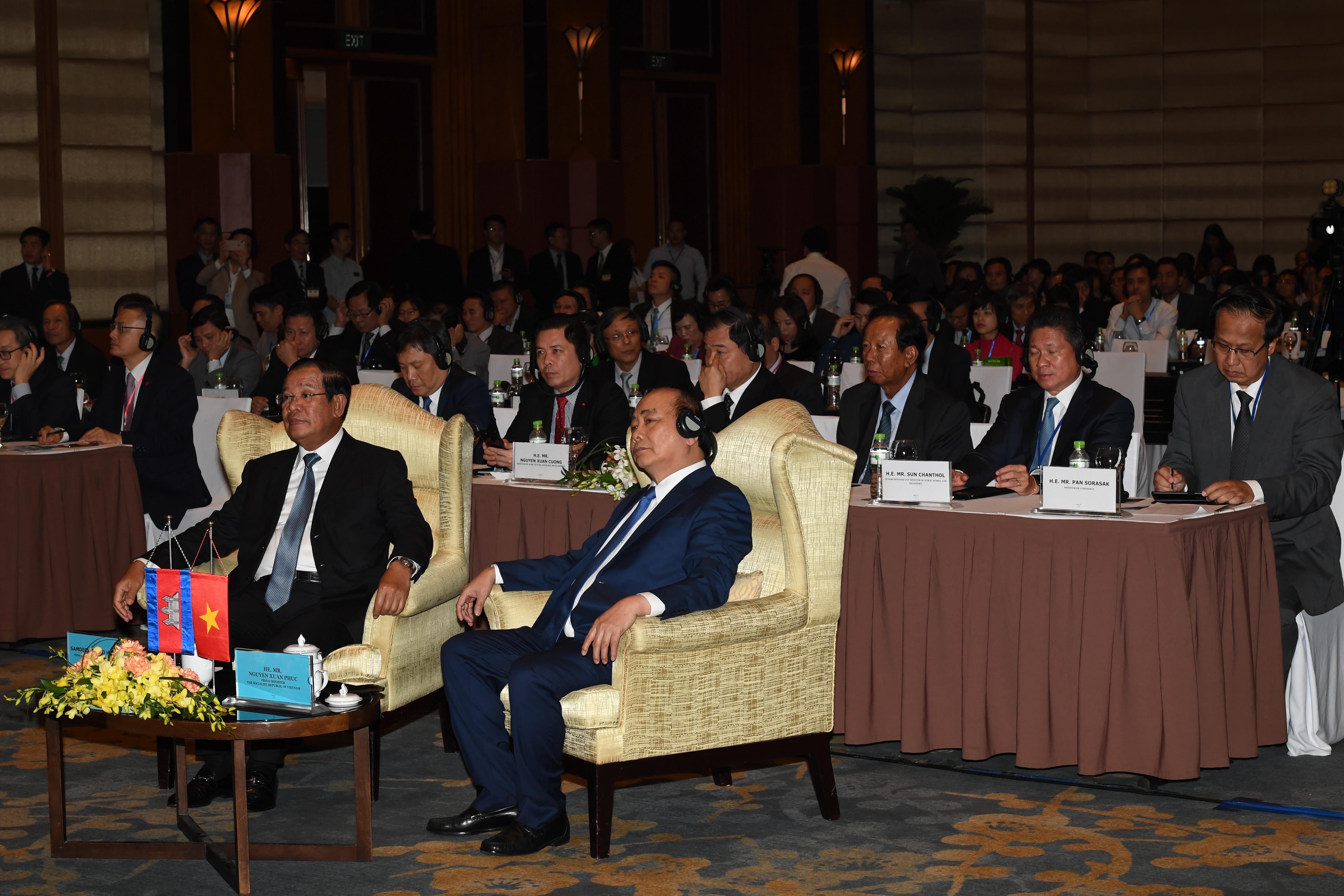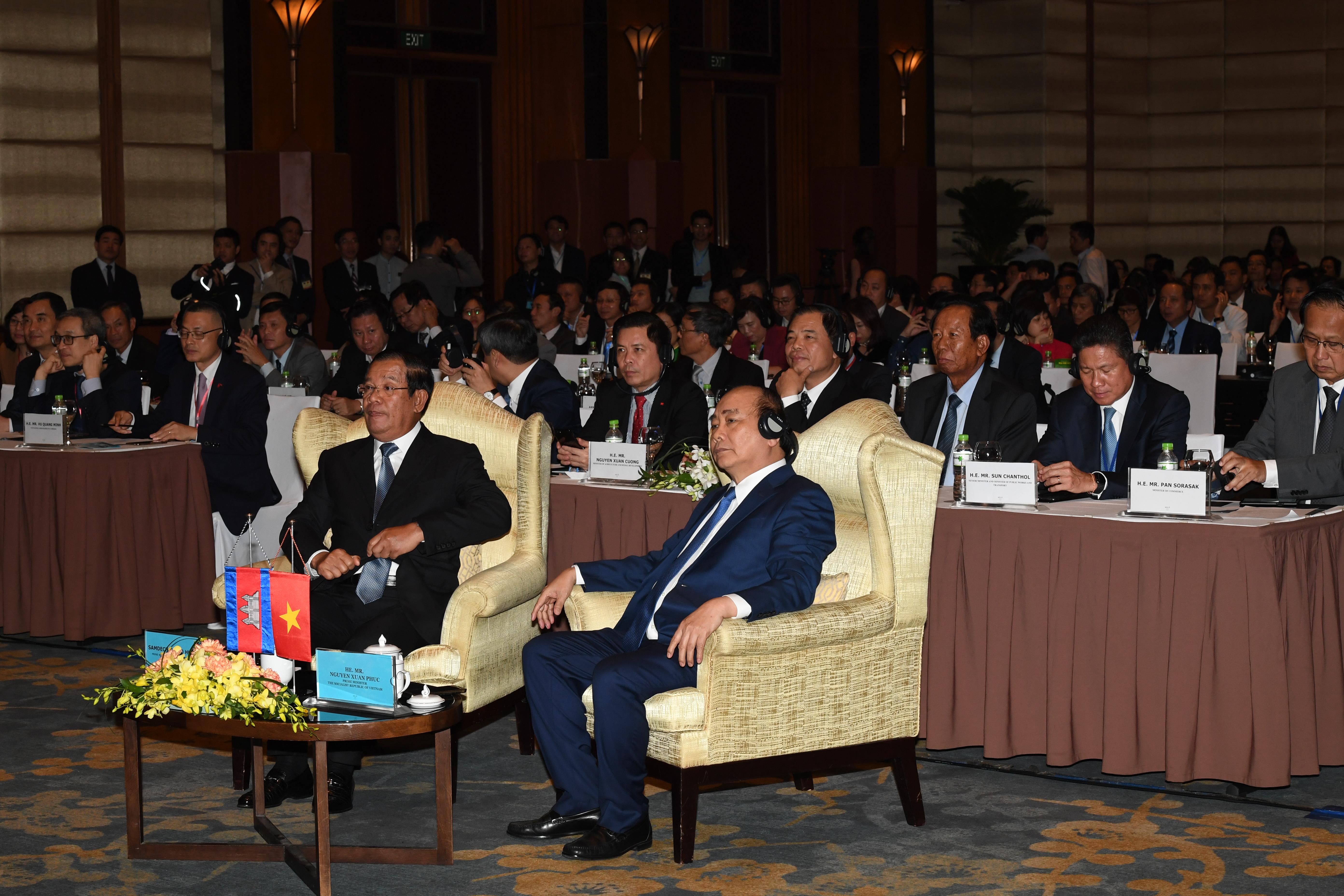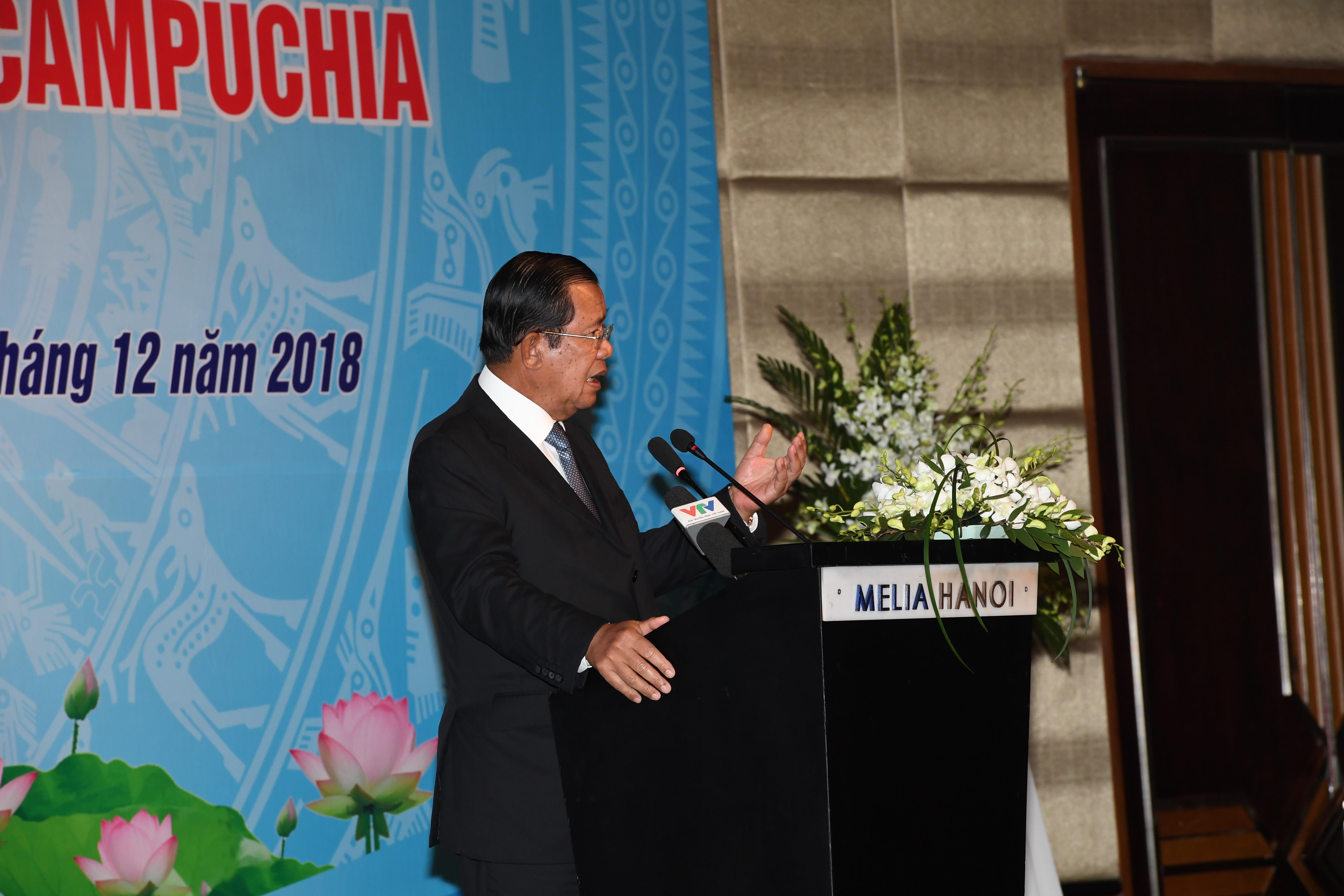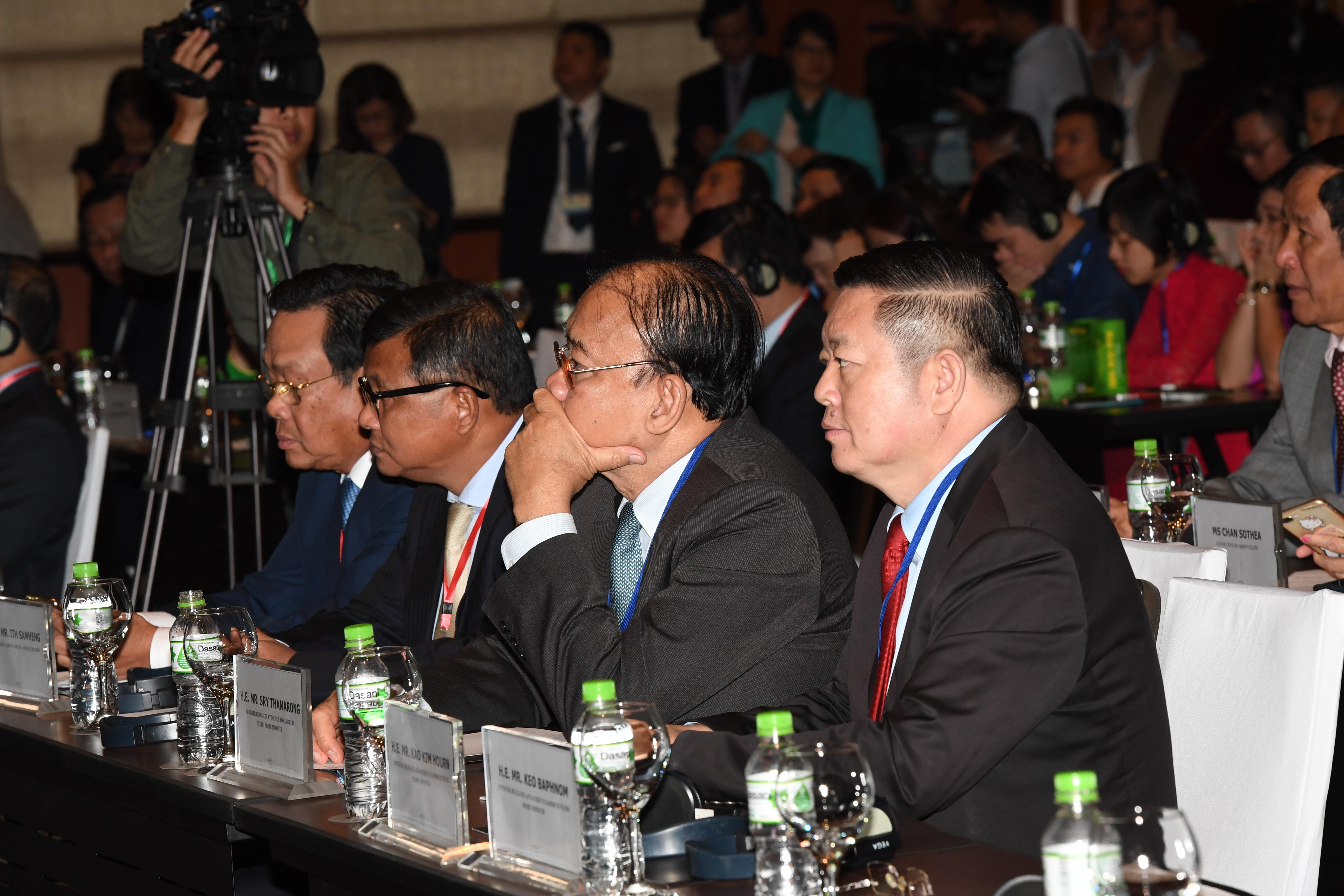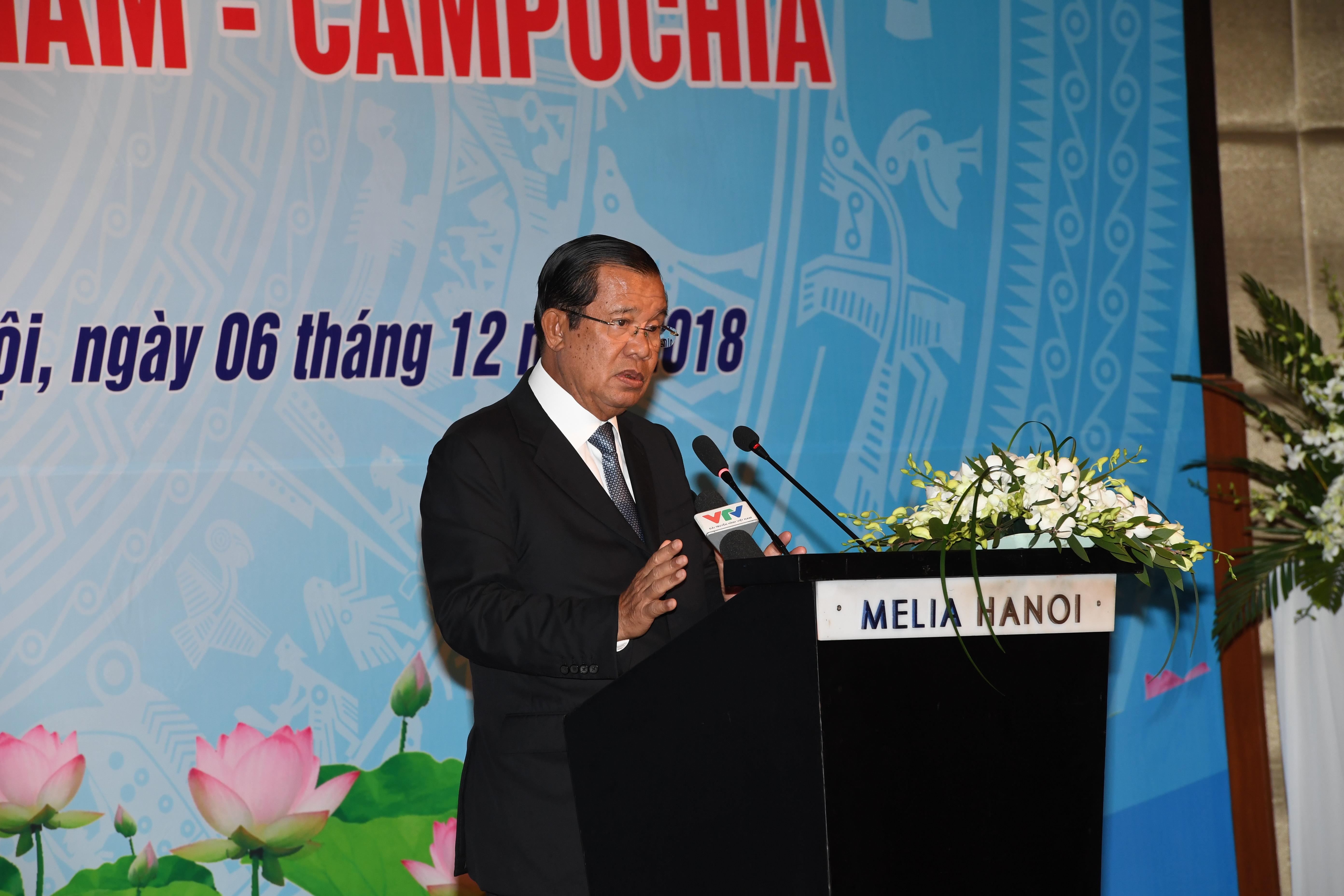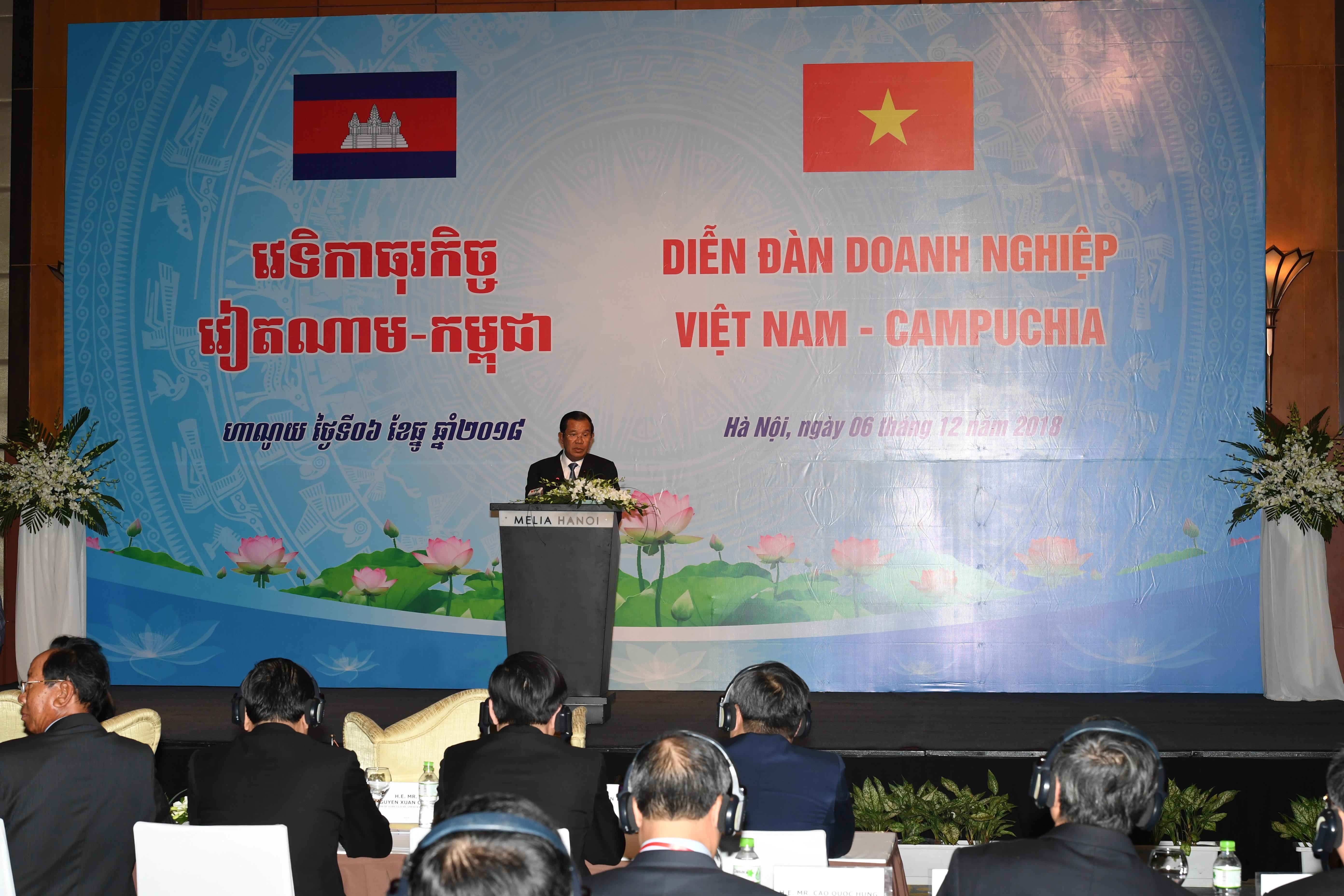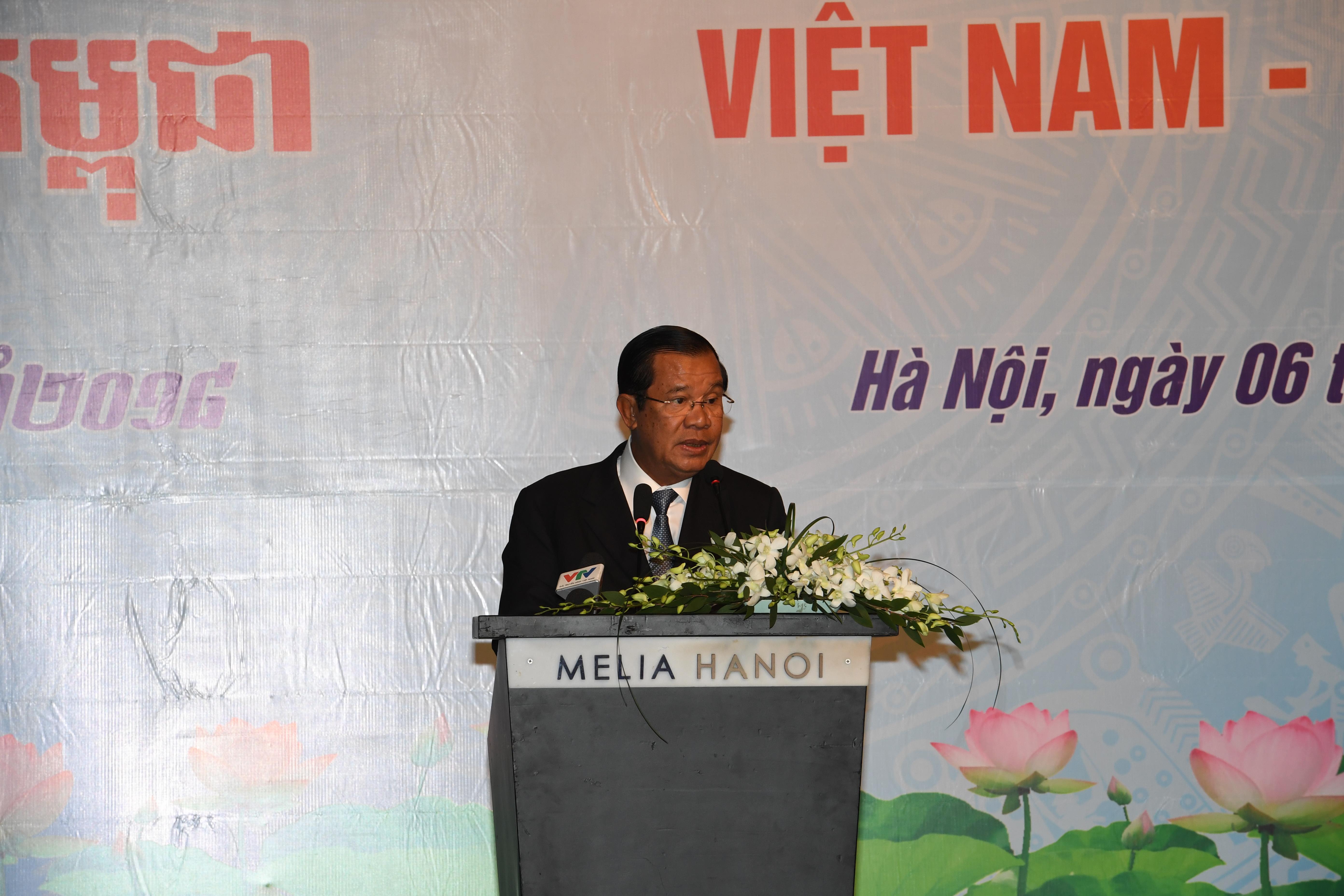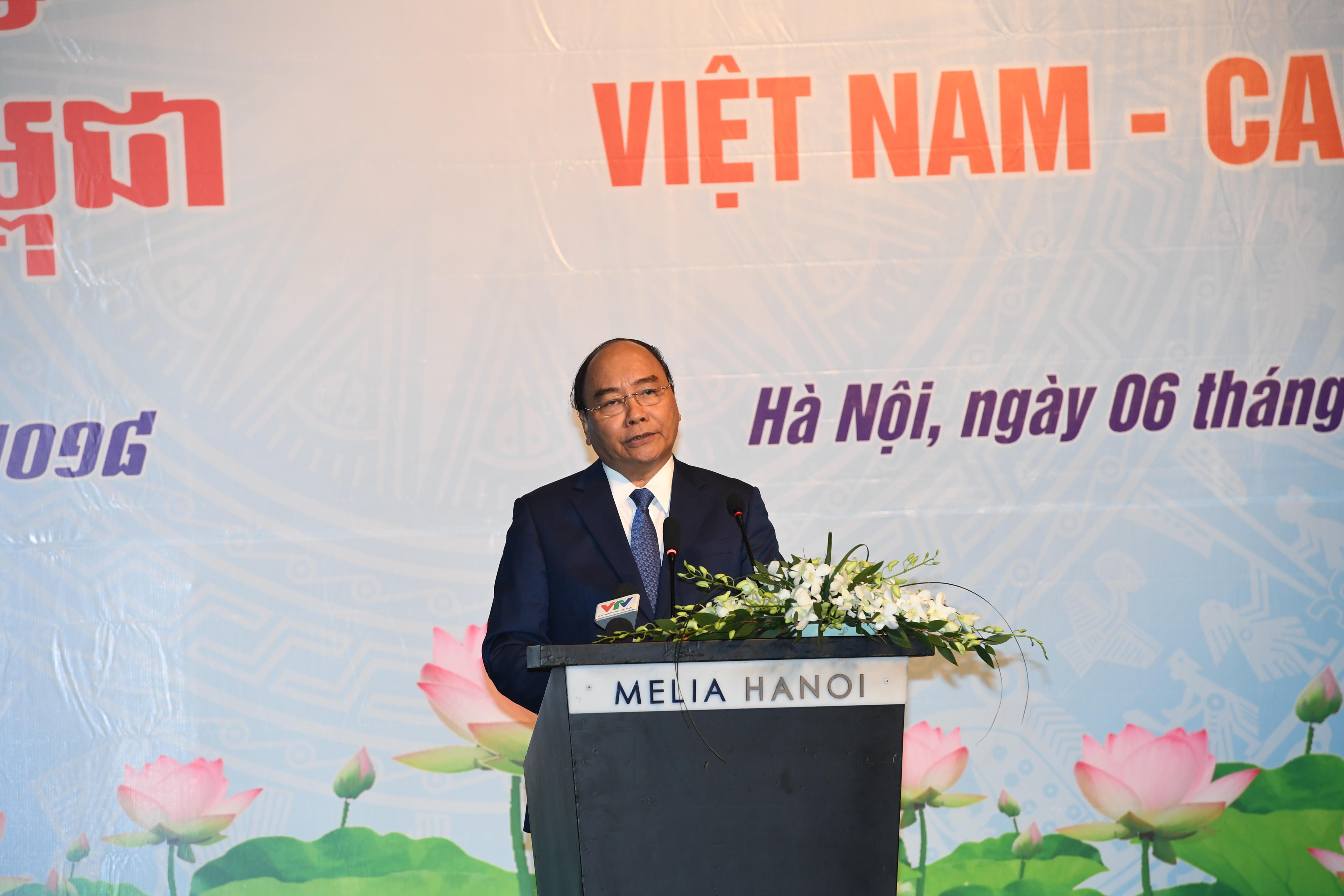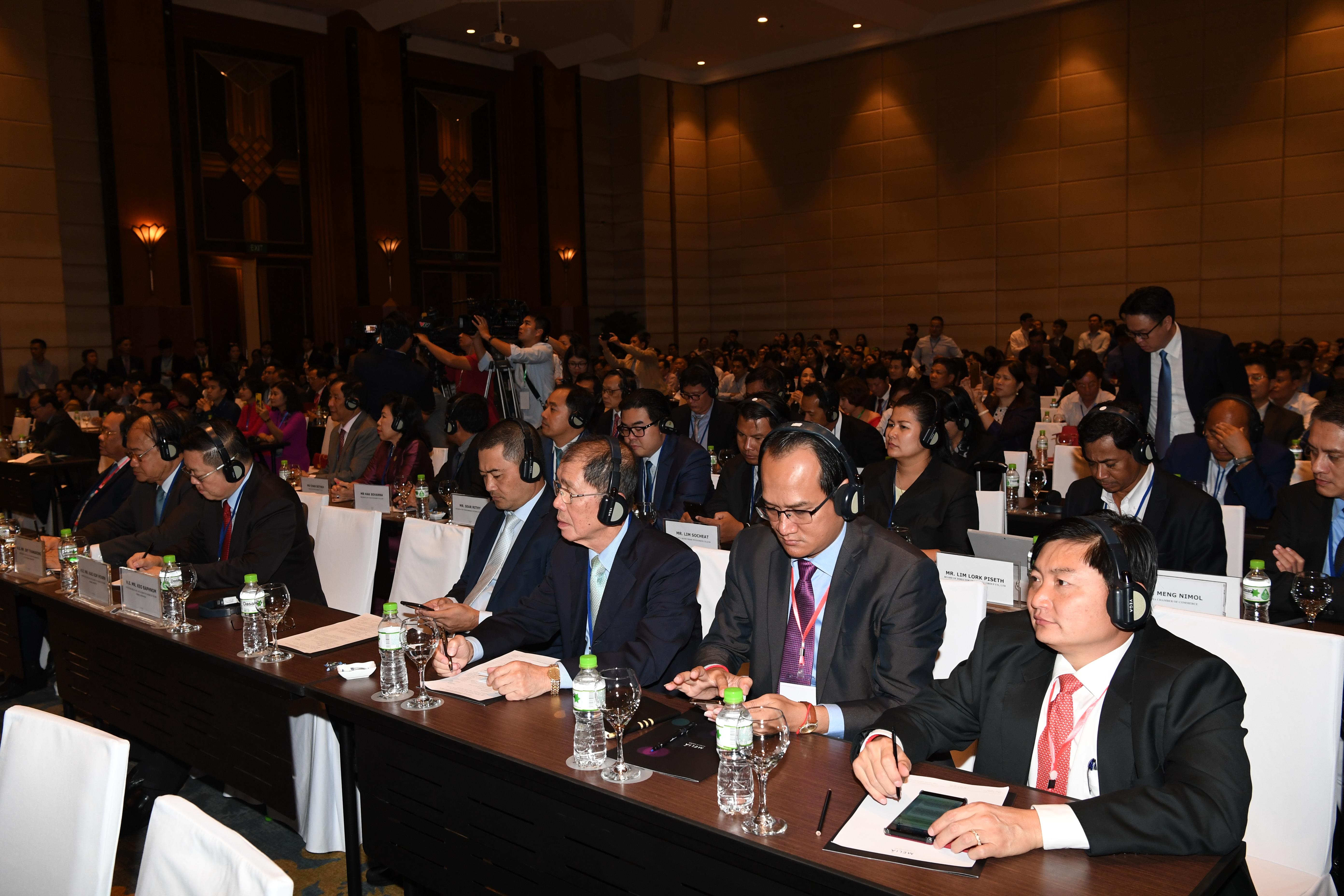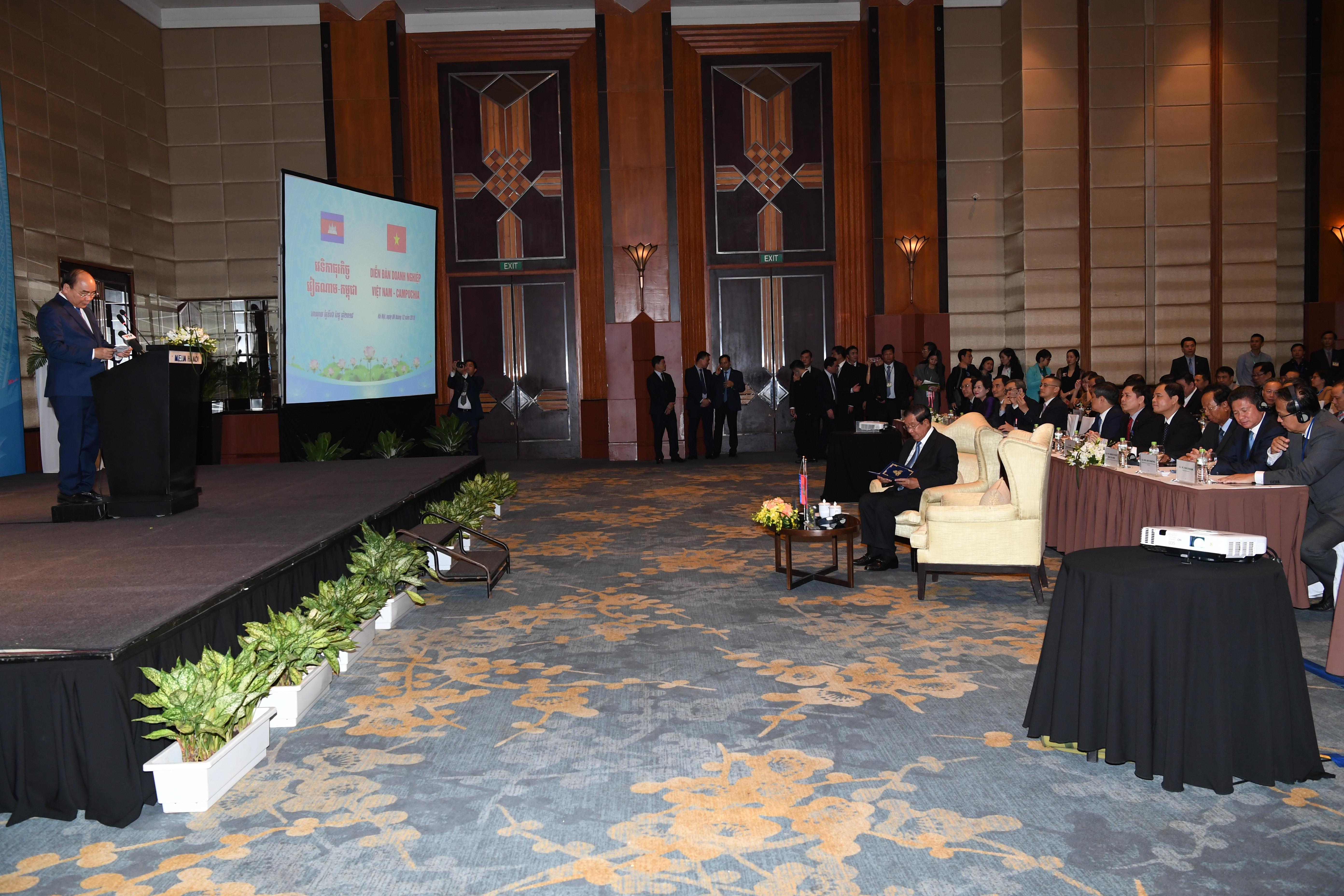Hanoi, Viet Nam (FN), Dec. 6 - Cambodian Prime Minister Hun Sen told Vietnamese investors that Cambodia welcomed all Viet Nam’s investments and provided every investor with favorable climate, particularly peace, political and macroeconomics stability, legal and institutional framework, transparency, and accountability, speaking at the Cambodia-Viet Nam Business Forum on Friday in Hanoi, Vietnam with the attendances of Vietnamese premier Nguyen Xuan Phuc and business leaders of the two countries.
According to the Strongman of Cambodia, Vietnamese investors should invest in Cambodia for seven reasons, including:
First, the absolute peace and political stability of Cambodia which led to the average economic growth of 7% per annum over the past two decades. Last week, the International Monetary Fund (IMF) predicted that Cambodia's economy will grow at a rate of 7.25% in 2018. Through impressive economic growth and reforms, Cambodia has taken a bold step towards sustainable development goals.
Second, Cambodia is strategically located in the ASEAN region, which has become "Factory of Asia”; Cambodia is also at the center of the Mekong Region - a region of great economic growth and connectivity. The shift of economic growth to Asia, in particular East Asia, continues to be a "golden opportunity" for Cambodia to develop and modernize her manufacturing and service industries with other countries in the region.
Third, Cambodia is enriched with young and potential labor force, in which 35-year-old group accounts for 72% of the total population. The increase of the middle-class population that will create opportunities for Cambodia to achieve high growth for the next three decades.
Fourth, Cambodia has opened up its economy for all investors without discrimination. Cambodia provides 100% investment on sectors, including banking, insurance and telecommunications. Cambodia still has tremendous potential for the development the financial sector, including increasing the depth of financial intermediation, improving the insurance industry, and developing the securities market.
Fifth, manufactured goods in Cambodia are not only supplied for Cambodia market with just over 15 million people but can supply to the Mekong Sub-region with about 250 million customers and to ASEAN market with approximately 630 customers, most importantly to Regional Comprehensive Economic Partnership Agreement (RCEP) with a population of approximately 3 billion.
Sixth, Cambodia has been integrating and connecting with the major economies in the country and in the region, which will create a vibrant logistics system and enhance regional competitiveness as a driving force for Cambodia to move forward and play important role in joining and complementing each other in the spirit of win-win with other countries in the Mekong region to make the region a new gathering area of the value chain of dynamic Asia. More than ever before, since the entry into the ASEAN Economic Community in December 2015, Mekong countries have made their integration more intimate and are turning the region into "Factory of Asia”.
Seventh, Cambodia-Viet Nam have signed agreement on double tax avoidance on 31 March 2018 in Hanoi.
According to Cambodian Prime Minister, 2018 marks the 51st anniversary of the establishment of diplomatic relations of Vietnam and Cambodia.
The total trade between Cambodia-Viet Nam in 2017 reached approximately US$2.1 billion, an increase of 30% compared to 2016. Cambodia's export to Vietnam amounted to US$342 million, whereas import from Viet Nam was US$1.8 billion. As of November 2018, the Council for the Development of Cambodia registered 75 Vietnamese agriculture and infrastructure investment projects worth of US$2.4 billion.
Cambodia's economy in 2018 is estimated to grow at 7.3%, and expected to maintain a growth rate of about 7 per cent per annum.
It’s estimated that Cambodia will move to a higher middle income country in 2030 and high income country in 2050.
The Royal Government of Cambodia is actively promoting the implementation of Industrial Development Policy 2015 – 2025 by focusing on higher value-added production base and greater integration with regional and global value chains.
=FRESH NEWS
